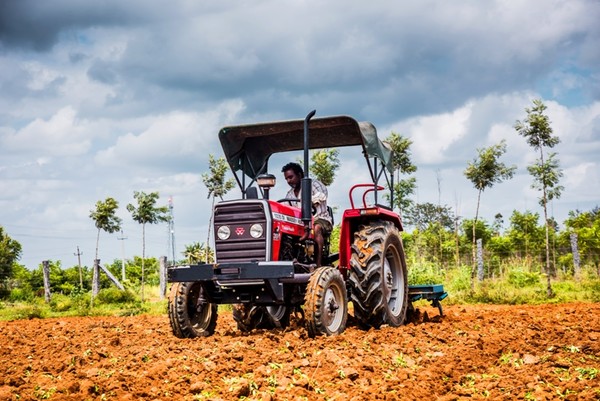
Agriculture in India, a look at the future
The subcontinent’s primary economy is going through a phase of transformation, under the leadership of a government that has set, among its priorities, the growth of productivity and incomes for farmers. The country, which has the potential not only to guarantee the food safety of the population but also to become a strong exporter of agricultural commodities, must also look at the variables linked to meteorological factors and climate change. A strong investment is needed in technological innovations, that are able to optimize production factors and prevent risks for crops
EIMA Agrimach, the international exhibition of agricultural machinery and equipment organized by FederUnacoma and FICCI – Federation of Indian Chambers of Commerce and Industry of New Delhi – has always represented an opportunity to evaluate the state of agriculture of the country.
This year, the focus is not only on the current agricultural situation but also to the future perspectives of the primary economy, starting from the programs launched by the government of Narenda Modi.
“Doubling farmers’ income by 2022”
The government, guided by the conservative party BJP has, since the beginning, set the focus on increasing the well-being of the rural population, that still represents the 60% of the 1.2 billion inhabitants of the country, as evidenced by the fact that the sentence “and farmers’ welfare” was added to the statements by the Ministry of Agriculture. Doubling farmers’ income in the next three years seems a very ambitious plan that will require strong investments from the government to improve both the profitability of fields and the infrastructures in rural areas.
By looking at the sector of agricultural machinery and equipment, the adoption of which is an essential element for the success of this project, the main support still remains the National Mission on Agricultural Mechanization (already extensively treated in the special of the number 3-4/2019 of Machinery World), an instrument that provides a financial support to the purchase of agricultural machines and equipment.
On the other hand, it also encourages the creation of custom hiring centers, that is centers for the supply of services to third parties.
“Doubling agri export by 2022”
India has undoubtedly the potential to become one of the world’s biggest exporters of agricultural commodities, both fresh and processed.
The country, by virtue of its immense extension, is at the top of the rankings relating to agricultural production and, with the adoption of cutting-edge techniques and technologies, it is estimated that it will respond to both domestic demand and the demand from abroad, with obvious benefits for the economy. To bring exports from the current 30 billion to 60 billion dollars, the technological progress must involve all the steps in the food chain, from cultivation to processing.
On this latter aspect the government has tried to give an answer through incentives for the creation of the so-called Mega Food Parks, industrial areas dedicated to the processing of food products.
To these challenges must be added those coming from the effects of climate change, that in countries such as India, in which agriculture mainly depends on the good rainfall trend, are felt even more than in other parts of the world. Despite the progresses made in the last few years, 51% of the 140 million hectares cultivated in India is still influenced by the monsoons, the winds on which the majority of rainfall in the country depends (in some areas of central India even 90% of rainfalls takes place during the monsoon period).
Rainfalls below the average, with a consequent deficit of water supply or above it, which can damage the crops, are increasingly frequent and, together with the increase in average temperatures, risk to seriously compromise the development of agriculture also because there is no evidence that the meteorological situation could improve in the years to come. Another important aspect is represented by desertification and soil deterioration: wide areas of the country have been declared at high risk and every year hundreds of thousands of hectares of agricultural soil become unsuitable for cultivation, with incalculable damages to the affected areas.
India must also continue to face a demographic growth that appears to be unstoppable: the most recent surveys indicate that India has a population of more than 1.3 billion people, which will become 1.5 within 2030, turning India into the most populous state of the world, to then further increase to 1.7 within 2050.
Still to be evaluated are the effects on the primary sector promoted by the Pradhan Mantri Kisan Samman Nidhi, a governmental program inaugurated with the fiscal year 2019-2020, which introduces a universal income for farmers with properties up to 2 hectares and it is addressed to a basin of 130 million potentially beneficiary families.
The future of the Indian agriculture appears to be full of many challenges: the mechanization of all stages of cultivation (it is estimated that, with regard to the overall potential, only 45% of field operations are currently carried out by using machines and equipment) is increasingly necessary, because only the technological contribution will enable Indian agriculture to overcome all its challenges.








